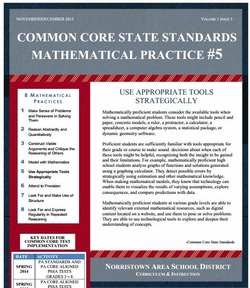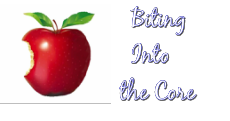SMP #5 Use Appropriate Tools Strategically
The North Carolina Unpacked Standards provide a summary statement about the SMPs for each grade level:
Kindergarten: Mathematically proficient students in Kindergarten have access to and use tools appropriately. These tools may include counters, place value (base ten) blocks, hundreds number boards, number lines, and concrete geometric shapes (e.g., pattern blocks, 3-d solids). Students should also have experiences with educational technologies, such as calculators, virtual manipulatives, and mathematical games that support conceptual understanding. During classroom instruction, students should have access to various mathematical tools as well as paper, and determine which tools are the most appropriate to use. For example, while solving the task “There are 4 dogs in the park. If 3 more dogs show up, how many dogs are they?” Kindergarten students are expected to explain why they used specific mathematical tools.”
1st Grade: Mathematically proficient students in Grade 1 have access to and use tools appropriately. These tools may include counters, place value (base ten) blocks, hundreds number boards, number lines, and concrete geometric shapes (e.g., pattern blocks, 3-d solids). Students should also have experiences with educational technologies, such as calculators and virtual manipulatives that support conceptual understanding and higher-order thinking skills. During classroom instruction, students should have access to various mathematical tools as well as paper, and determine which tools are the most appropriate to use. For example, while solving 12 + 8 = __, students explain why place value blocks are more appropriate than counters.
2nd Grade: Mathematically proficient students in Grade 2 have access to and use tools appropriately. These tools may include place value (base ten) blocks, hundreds number boards, number lines, and concrete geometric shapes (e.g., pattern blocks, 3-d solids). Students should also have experiences with educational technologies, such as calculators and virtual manipulatives that support conceptual understanding and higher-order thinking skills. During classroom instruction, students should have access to various mathematical tools as well as paper, and determine which tools are the most appropriate to use. For example, while solving 28+17, students can explain why place value blocks are more appropriate than counters.
3rd Grade: Mathematically proficient students in Grade 3 consider the available tools (including estimation) when solving a mathematical problem and decide when certain tools might be helpful. For instance, they may use graph paper to find all the possible rectangles that have a given perimeter. They
4th Grade: Mathematically proficient students in Grade 4 consider the available tools (including estimation) when solving a mathematical problem and decide when certain tools might be helpful. For instance, they may use graph paper or a number line to represent and compare decimals and protractors to measure angles. They use other measurement tools to understand the relative size of units within a system and express measurements given in larger units in terms of smaller units.
5th Grade: Mathematically proficient students in Grade 5 consider the available tools (including estimation) when solving a mathematical problem and decide when certain tools might be helpful. For instance, they may use unit cubes to fill a rectangular prism and then use a ruler to measure the dimensions. They use graph paper to accurately create graphs and solve problems or make predictions from real world data.
InsideMathematics has a video example of SMP #5 in action in a 5th grade classroom.
Thinkmath.edc.org has a discussion about SMP#5.
Wisconsin has video links and info about SMP#5 here.
A great video example from the Teaching Channel.

Noristown Unified School District in Pennsylvania has published some outstanding newsletters which focus on each of the Standards for Mathematical Practice. SMP Newsletter #5 can be found here.


